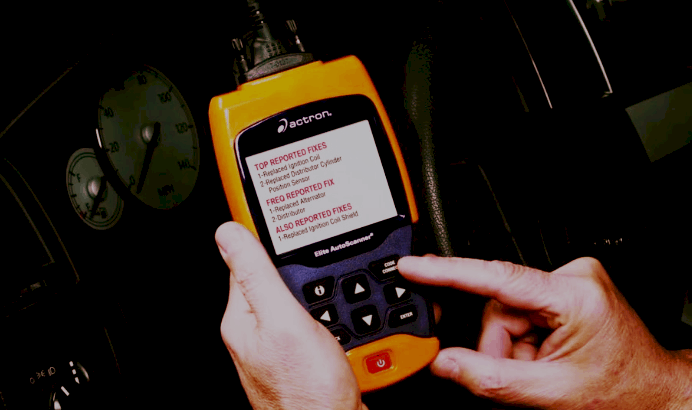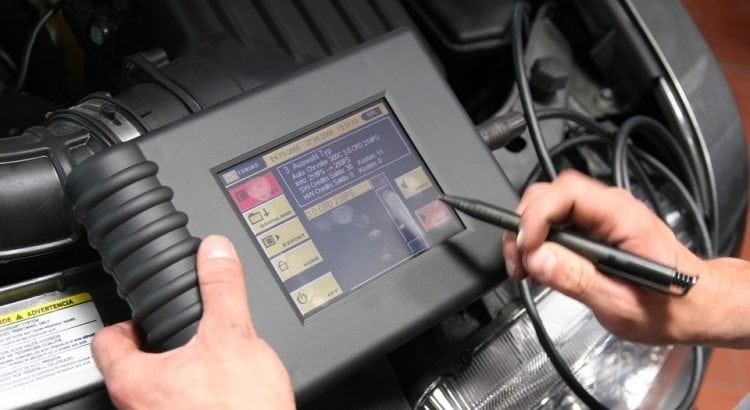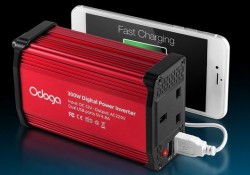How to use OBD2 scanner?
Nowadays, an OBD2 scanner is a must-have device for every car owner because it tells them the overall condition of the car. It helps to maintain the health of the car and understand the data gathered by OBD2 mechanics use the OBD2 scanner. It works by sending commands to the different systems. If you have this device in your car, you will get the data about the car's coolant, air temperature, rpm, and road speed. It can tell the difference between a faulty $30 gas cap and a bad catalytic converter costing many times more. It will also provide rare insight into the deeper recesses of the engine-transmission and other vital components.
But the problem is that many of us don't have the proper knowledge about using it. If you are the person in this category, then you are in the right place. Today, I am here to tell you everything about how to use OBD2 scanner in detail.
At first, I will tell the types of the scanner. You know what there are two types of OBD2 scanners in the market.
- Code Readers: This type of device is available at a reasonable price and you will easily get them in the market. If you have this device in your car, you will be able to read the codes. But the problem is that it has some limitations also that lacks some knowledge of manufacturer codes.
- Scan Tools: These devices are made with more advanced technology than the code readers and they have a lot more features also. They provide you with extra access to the data. You will be able to access the recorded and live data as well. While the code readers can't read the manufacturers' code, scan tools can easily do that. They can also enable advanced troubleshooting. Only the problem is that they are a little bit expensive.

How does the OBD2 scanner work
I have told earlier that there are two types of scanner in the market and so, it depends on your scanner. If you have a code reader, you will be able to clear codes and read codes. On the other hand, a scan tool will allow you to view the live and stored data with many other functions. So, it is all about the money you are investing for the OBD2 scanner.
But they have some basic functions. They allow you to check pending codes, provide information and a customized list of parameters. If you have no idea about any OBD2 device, you will be able to understand these certain things with the device. That's why many of us like to use a code reader. It doesn't need extra knowledge to use. But the problem with it is that it can't solve the problem by itself.
On the other hand, the scan tool will help you to analyze what is wrong with your vehicle. It has an engine headlight indicator that pops up on your car meter. If the indicator blinks, it means that PCM, which is the power train control module, can't decode the message sent by some car sensor. It gives the warning to tell you that there is a problem. It successfully decodes the code.
You may read
Follow the steps to use an OBD2 scanner
Plug it with the data link connector: It is located under the car's control panel. After turning off the car, connect the scanner with the connector. It will start functioning after connecting the plug with the car's OBD2 system.
Turn on the car: Now you can turn on the switch of the car. Take time for the scanner to boot up and wait for a little while automatically. Have a look it has boot up or not. If not, then press the power button to start the process.
Put in the details: It will take a little bit of time to get ready. Then it will ask you to put some details about the model, type, engine, etc about the car. Put them properly.
Give it time to analyze: It will analyze and scan the vehicle's diagnostic system according to your information. So, give it time for this job. After analyzing properly, it will provide you some codes or a single error message. Write them down or transfer them to your mobile phone or other devices you want through Bluetooth.
Check the scanner manual: Go back to the scanner manual where you will get some more answers. Transferring all the data, check the manual, and see what each code means. It provides information about basic codes. If you can't find them, check them on the internet. One thing to tell you that the codes may differ in each other because of different models of cars.
Unplug the scanner: After recording the codes, switch off the car and unplug the scanner from the OBD2 system. It will provide you the information you want.

Some rules to follow using it
- I have told you the basics while using an OBD2 scanner. But it is good to read and follow the device-manual before using it.
- The plug contains 16 small pins. So, when you connect it with your car's OBD2 system, you will have to be very sincere. Don't try to connect it roughly otherwise the pins might bend.
- Start the vehicle after connecting the scanner to avoid corrupting the OBD2 software.
I have come to the end of my article. I have tried to tell you everything you need to know before using an OBD2 scanner. I hope you will be benefited from the article.
Conclusion
Nowadays, an OBD2 scanner is a must-have device for every car owner because it tells them the overall condition of the car. It helps to maintain the health of the car and understand the data gathered by OBD2 mechanics use the OBD2 scanner. It works by sending commands to the different systems. If you have this device in your car, you will get the data about the car's coolant, air temperature, rpm, and road speed. It can tell the difference between a faulty $30 gas cap and a bad catalytic converter costing many times more. It will also provide rare insight into the deeper recesses of the engine-transmission and other vital components.
But the problem is that many of us don't have the proper knowledge about using it. If you are the person in this category, then you are in the right place. Today, I am here to tell you everything about how to use OBD2 scanner in detail.
At first, I will tell the types of the scanner. You know what there are two types of OBD2 scanners in the market.
- Code Readers: This type of device is available at a reasonable price and you will easily get them in the market. If you have this device in your car, you will be able to read the codes. But the problem is that it has some limitations also that lacks some knowledge of manufacturer codes.
- Scan Tools: These devices are made with more advanced technology than the code readers and they have a lot more features also. They provide you with extra access to the data. You will be able to access the recorded and live data as well. While the code readers can't read the manufacturers' code, scan tools can easily do that. They can also enable advanced troubleshooting. Only the problem is that they are a little bit expensive.

How does the OBD2 scanner work
I have told earlier that there are two types of scanner in the market and so, it depends on your scanner. If you have a code reader, you will be able to clear codes and read codes. On the other hand, a scan tool will allow you to view the live and stored data with many other functions. So, it is all about the money you are investing for the OBD2 scanner.
But they have some basic functions. They allow you to check pending codes, provide information and a customized list of parameters. If you have no idea about any OBD2 device, you will be able to understand these certain things with the device. That's why many of us like to use a code reader. It doesn't need extra knowledge to use. But the problem with it is that it can't solve the problem by itself.
On the other hand, the scan tool will help you to analyze what is wrong with your vehicle. It has an engine headlight indicator that pops up on your car meter. If the indicator blinks, it means that PCM, which is the power train control module, can't decode the message sent by some car sensor. It gives the warning to tell you that there is a problem. It successfully decodes the code.
You may read
Follow the steps to use an OBD2 scanner
Plug it with the data link connector: It is located under the car's control panel. After turning off the car, connect the scanner with the connector. It will start functioning after connecting the plug with the car's OBD2 system.
Turn on the car: Now you can turn on the switch of the car. Take time for the scanner to boot up and wait for a little while automatically. Have a look it has boot up or not. If not, then press the power button to start the process.
Put in the details: It will take a little bit of time to get ready. Then it will ask you to put some details about the model, type, engine, etc about the car. Put them properly.
Give it time to analyze: It will analyze and scan the vehicle's diagnostic system according to your information. So, give it time for this job. After analyzing properly, it will provide you some codes or a single error message. Write them down or transfer them to your mobile phone or other devices you want through Bluetooth.
Check the scanner manual: Go back to the scanner manual where you will get some more answers. Transferring all the data, check the manual, and see what each code means. It provides information about basic codes. If you can't find them, check them on the internet. One thing to tell you that the codes may differ in each other because of different models of cars.
Unplug the scanner: After recording the codes, switch off the car and unplug the scanner from the OBD2 system. It will provide you the information you want.

Some rules to follow using it
- I have told you the basics while using an OBD2 scanner. But it is good to read and follow the device-manual before using it.
- The plug contains 16 small pins. So, when you connect it with your car's OBD2 system, you will have to be very sincere. Don't try to connect it roughly otherwise the pins might bend.
- Start the vehicle after connecting the scanner to avoid corrupting the OBD2 software.
I have come to the end of my article. I have tried to tell you everything you need to know before using an OBD2 scanner. I hope you will be benefited from the article.



